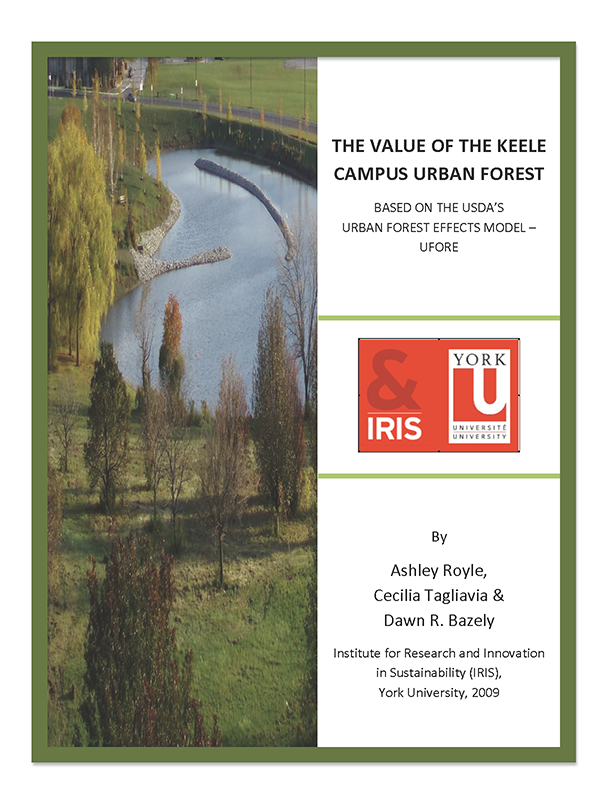
In the summer of 2007 IRIS initiated a project addressing the tree canopy of York University. Like all urban forests, the trees on campus provide many benefits, such as increased energy efficiency, aesthetics and pollution abatement. However, the urban environment also presents substantial stresses, including soil compaction, drought and disease. As such, in order to sustain and improve the ecological integrity of the University's tree canopy we must first understand its structure and components, and in doing so, IRIS looked to UFORE.
Developed in the late 1990s by researchers at the US Forest Service in Syracuse, NY, UFORE "Urban Forest Effects" is a computer model which provides statistically based sampling and data collection protocols and calculates the structure and environmental effects of urban forests. During 2007 and 2008 a complete inventory of the University's trees was initiated, collecting basic data on species, DBH (diameter breast height) and height. The inventory included sample plots in each of the campus woodlots: Boyer woodlot, Danby woods, Boynton woods, Osgoode woodlot and Saywell woods.
The structural data generated by this UFORE analysis provides information on the physical characteristics of the vegetation (i.e. species composition, tree size, tree health) - which is what urban foresters, and campus planners, must manage. Furthermore, since detailed reference information was collected, IRIS also has the option to continue pursing additional analysis through UFORE in future years.
The IRIS report "The Value of Keele Campus Urban Forest", is now available for download.

